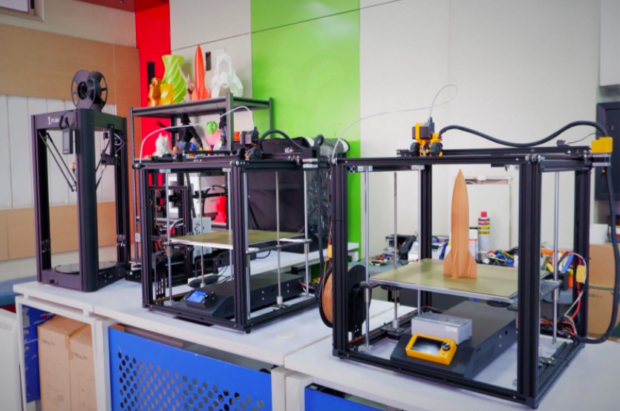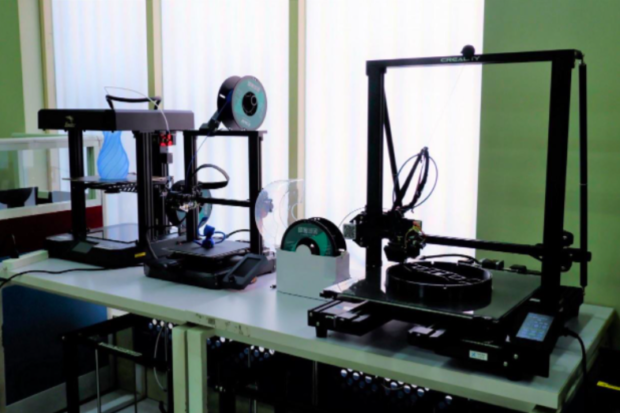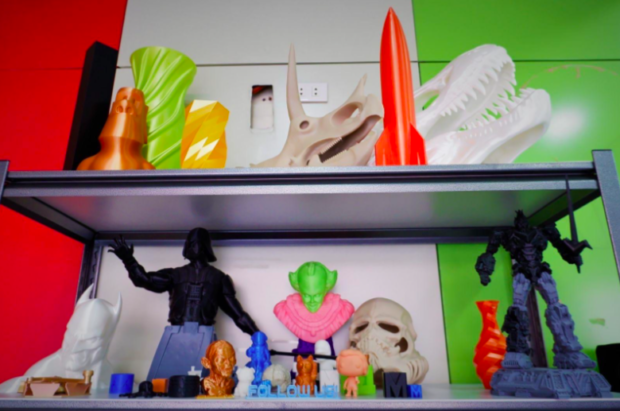Filipino firm: 3D printing, an untapped potential for businesses
More Filipino creators have been buying 3D printers during this pandemic, a local distributor said, but businesses across industries should take notice of this technology too, where the only limit in prototyping an idea is one’s imagination.
Makerlab Electronics, which has been selling 3D printers among other products since 2016, said it is now seeing online orders that come from Visayas and Mindanao, a welcome development since the demand used to be concentrated mainly in Metro Manila.
“Based on our sales, we are still growing. so we anticipate the increase in demand for our products and an increase in our offline and online store visitors as quarantine restrictions gradually ease in the country,” said Mike Jassen Sy, founder of the Filipino firm.
“According to our data from Lazada and Shopee, we have numerous orders from the Visayas and Mindanao region,” he said.

3D printing, or additive manufacturing, works by adding layers to form a tangible object based on a digital file. Different industries have pushed the limit of what 3D printing can do, from making one’s own memorabilia to as big as building a house.
However, there still remains a lot of room for growth, said Sy. 3D printing — which adds layers to produce a tangible or three-dimensional prototype of a product — can be used by practically all industries in the Philippines, which will help them innovate faster.
While MakerLab sells its products to students and enthusiasts who are eager to learn more about robotics and programming, Sy said there is also a commercial advantage for a business to have its own 3D printer.
“The good thing about this is that it can be applied to all industries in different forms, said Sy, a mechanical engineer from De La Salle University. Among others, this could be applied to architecture, mechanical engineering, health and services, and even education.
The global market for 3D printing activities had grown through the years, providing plenty of opportunities for businesses to take advantage of the technology. The global market is expected to rise from $5.8 billion in 2016 to $55.8 billion by 2027, an annual growth rate of 23 percent, according to US-based consultancy firm Smithers.
More hobbyists and home users own 3D printers, accounting for 233,000 printers in 2016 as opposed to 63,000 units owned by businesses, Smithers said. Nevertheless, the value the private sector gets from these printers is still much larger, representing $5.4 billion in 2016 versus $0.4 billion from home users.

3D printing used to be so expensive. At one point, an entrepreneur would need P200,000 to start a 3D printing business. Now, with the help of Makerlab, a 3D printer could cost a little over P10,000 — without compromising the quality of the output.
Over time, 3D printers had become more affordable. In the past, Sy said entrepreneurs needed at least P200,000 in capital to start a 3D printing business. Now, one could buy a 3D printer from MakerLab at little over P10,000 through Shopee, Lazada, or its official website.
Sourcing plays a major role as to why Makerlab could provide the market with affordable but quality 3D printers and other electronic products. It gets most of its products from manufacturers in Shenzen, China, which is popularly known as the “Silicon Valley of China.” Otherwise, the price would almost be tripled, if sourced from anywhere else.

These are just a few simple examples of what a 3D printer can do. Can’t find a Darth Vader figurine? Find a design and print your own.
“Though 3D Printing is not that popular yet in the Philippines, we foresee its potential impact especially in the manufacturing industry. We expect more and more Filipinos will be more aware of 3D printing, since manufacturers now offer affordable 3D Printers with advanced features,” Sy said.
“And since we are also aiming for it, we will do our best to support future 3D printing enthusiasts through knowledge and service,” he said, adding that they are working on some video tutorials among other educational materials.
Besides 3D printers, Makerlab also offers low-priced microcontrollers, breakout boards, electrical enclosures, liquid-crystal displays, Raspberry Pi computers, prototyping, relays, sensors, soldering, and wireless technology.
ADVT.